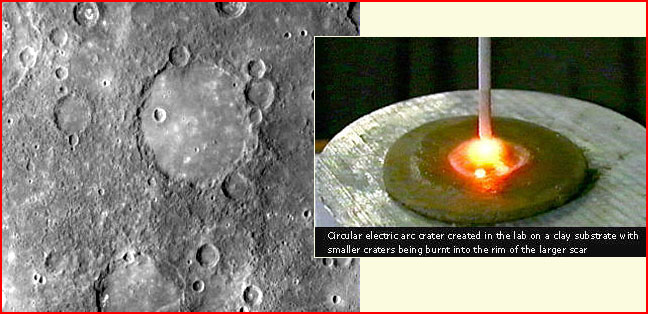|
|
||
 Credit: Mariner 10 |
||
|
pic of the day Links:
Society for
|
Aug 16, 2004 In the 1960's the Ranger Moon shots sent the first televised closeup images of the Moon before crashing into its surface. Astronomers noted many odd features of crater distribution that were difficult to explain by random impacts. Lunar craters tend to occur in pairs and lines. Some lines of craters were attributed to cracking and subsidence of the surface. Others were thought to be due to impacts. The difficulties in choosing a cause for the heavy cratering of the Moon was finally settled by a vote. But were all of the candidate mechanisms canvassed? Craters formed by electric discharge exhibit circular symmetry with little disturbance to pre-existing craters. Electrical craters can appear to be distributed randomly, but they are not. They naturally form clusters, lines, and arcs. The size of craters within linear groupings are often graduated. Small craters are found cut into the rims of large craters, but the reverse is seldom seen. The above pictures illustrate a common pattern of electrically excavated craters. In the laboratory (inset image) a large crater is being carved. Where the rim of the main crater is lifted above both the original surface of the clay and the crater bottom, the arc jumps to high points on the rim. This produces smaller secondary craters centered on the rim of the original crater. You can see craters on the rims on many of the craters in the main image, taken by Mariner 10 as it flew past the planet Mercury. It is not a pattern expected of impacts. |
|
|
Copyright 2004: thunderbolts.info |
||
